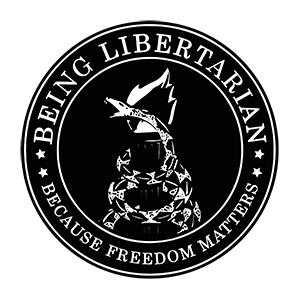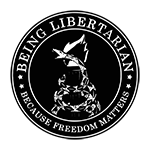Throughout the circles of progressives, liberals and laymen alike, especially during the United States presidential campaign, we’ve heard the continuous propagation of “free education,” especially on the collegiate level. We’ve been told that college should be either affordable or free for students so that they can have the accessibility and capability to excel and advance in the economy without having to face predatory loans or have their dreams diminished due to exorbitant tuition prices. The aforementioned clichés sound politically correct and rather appealing to the masses of an apolitical, irrational and credulous group of people, but contrary to popular belief, there is no “free lunch” when it comes to institutional education.
When we look at the public school system, it costs $13,000 on average nationally to educate a pupil at the elementary, middle (if applicable) and high school levels. Further, the nation’s average annual cost of tuition is $33,480 for private colleges, $9,650 for in-state residents in public colleges, and $24,930 for out-of-state students attending public universities. Of those students who begin college, 41% won’t complete their education; similarly, the national high school graduation average is 82%.
Unfortunately, between the status of the job market, the diminishing return and utility of a college degree and the $1.2 trillion in student debt, we can see that free education on the public level already isn’t free and definitely isn’t the answer to individual prosperity in American society. Additionally, education isn’t necessarily free due to the property, state and federal taxes that are already paid for education. Students are still dropping out of high school and college, and where the public school system has failed millions of students, especially in the inner city, in the name of funding being utilized as the “panacea” or solution to the so-called “achievement” gaps in different inner city districts.
As previously mentioned, many people think that the solution to the college affordability problem is to make tuition free with Bernie Sanders’ proposal to use federal revenue to pay two thirds of tuition with state governments paying the other third. Although this sounds idealistic, it would cause tax increases for states like New Jersey and New York who already pay high amounts on education, and other states would have to pay more taxes than usual for education instead of K-12 schools, infrastructure, public assistance, transportation, prisons, government salaries, etc.
The states that will benefit are the ones who can afford to do so, specifically in places where students would have a higher per student benefit such as Vermont, which would receive a $15,096 break for a 4 year in-state institution compared to $8,247 in Arkansas! What this does is alleviate the states’ rights to determine how to appropriate their taxes in addition to alleviation of the individual’s freedom to choose which institutions to attend upon acceptances based on the relative federal and state subsidies that they’ll receive for “free education.” This means that they may not be able to attend a higher quality institution in-state or out-of-state due to the average subsidy that they’re receiving based on the average amount of tuition for each state. Not to mention, there’s no guarantee that students will even complete their degree; in this case, it is the taxpayer who will have their funds appropriated for the purposes of gambling with someone’s education or career when society may not receive a return on their investment.
I write all of this to dispel the myth of “free education” and to state that taxation or extra subsidization is not the solution for the attrition rates at high school or collegiate levels but, instead, incentives have to be created for the Trinitarian team of teachers, principals, and parents to ensure that students are successful and competent so that they can become excellent contributors to society and the economy.
I am a product of the public school system and am still looking to remedy myself from the repercussions of incompetent and apathetic tenured teachers and administrators who had no incentives to properly educate students, since they typically get paid higher salaries to work in lower performing or inner city districts regardless of whether or not the students achieve. Hence, I am definitely a supporter of accountability, responsibility and synergy for teachers, parents, students and the educational administrators in private and public schools to ensure progress.
At the same time, I am for free market solutions for education, like charter schools, private schools, tutoring and training programs because when a parent’s or student’s direct earnings are involved, it incentivizes seeking a return on their investment, in this case a quality education, and efficacious results in which the prerequisites are productivity and passion, among other characteristics. Not all charter and private schools are perfect, but statistics have corroborated their success. In the crime-ridden District of Columbia, charter school students have scored higher than public school students on the PARCC (Partnership for Assessment of Readiness for College and Careers) test this year for elementary and high school students, where in language arts, 29% of students in charters reached the highest levels of 4 and 5 compared to 25.5% of students in public schools.
In mathematics, it was reported that 26% of charter students reached the highest levels of 4 and 5, compared with 23.9% of public school students. The demographics for the charter school students are 79% African American, 12 Hispanic and 6% white, and for public school students, the demographics are 64% African American, 18% Hispanic and 13% white. Also among charter high schools, the BASIS DC Charter High School had 91% of their students achieve the top scores of 4 or 5 in language arts and 86% scored the same in mathematics!
Moreover, in my hometown of Jersey City, NJ, only 67.3% of public high school students graduated in 2015 compared to 87.8% of the students in the city’s only charter high school, University Academy Charter School. Additionally, the graduation rate for Hoboken Charter High School is 88.24% compared to 74.53% in the public high school! Importantly, the aforementioned schools do not require rigorous acceptance requirements but they follow the common application and arbitrary lottery pool procedures, thus maintaining students on waiting lists.
In conclusion, mere public funding for education is not the solution for students on the elementary, high school or collegiate levels. Providing incentives and inculcating the motivation for students to excel is what will ensure academic success for private and public institutions.
Unfortunately, the government has been very complacent regarding education in general, with the exception of a few schools nationally. For example, the author’s father, Principal Kafele, had a track record of transforming schools like Sojourner Truth Middle School and Patrick Healy Middle Schools in East Orange in addition to Newark Tech High School in Newark, NJ from low performing and state classified “dangerous” schools to institutions conducive for learning and success.
Under his educational administration, the test scores were exponentially higher, plus student attrition and violence declined precipitously. The reasons for these accomplishments was NOT because of extra funding for these schools via the country, state or federal governments, but instead him focusing on the attitudinal and cultural rectification of the student body in addition to the faculty/staff on individual and cohesive levels which made the schools that he lead meritoriously unique from the other troubling schools in their districts.
Thus, the myth of free education is not the solution to the problems throughout the educational sector but instead providing incentives for students, parents, teachers and faculty alike to excel so that the progeny of our nation could advance our society and economy. Free education isn’t free, but if education were left to the free market then I think that the net effect will be comparatively more beneficial for society as a whole even though there are a few exceptions of public schools, mostly in the inner cities.
Baruti Libre
Latest posts by Baruti Libre (see all)
- The Free Market: The Medicine that South Korea Used To Contain the Coronavirus - March 24, 2020
- Price Controls on Hand Sanitizer Are Not Good Under Any, Much Less Crisis, Circumstances - March 24, 2020
- Kwanzaa: Ending Black Poverty, Dependence, and Entitlement - December 27, 2018








